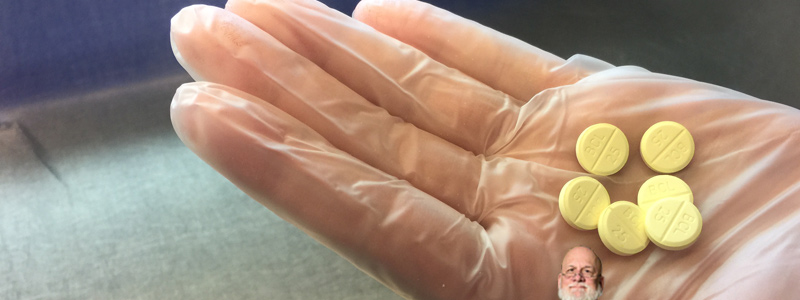Compounding pharmacists have prepared capsules of 4-aminopyridine (4AP) for many years. It has been prescribed for people who suffer from multiple sclerosis. The chemical is a potassium channel blocker that has officially been used as a bird toxin. When used appropriately, the patient can expect improvements in walking and other motor activities.
Does it work?
In my experience, the answer is clearly, yes.
There’s a “trick” to using 4AP correctly. If a person uses too much, he or she will suffer unpleasant side effects, including seizures. The compounded 4AP preparation is usually made in a 5mg strength and is made to dissolve rapidly in the body. The drug is quickly absorbed and begins working in just a few minutes. The trick I mention is that a user must follow a ramping schedule in order to establish for themselves how the drug will work for them and to determine the best dose.
We provide a written ramp protocol that begins at 5mg per day and increases per a schedule to a level of 30mg to 40mg per day. The guidelines for 4AP suggest that a dose of 0.5mg per Kg of body weight per day is helpful and safe. That’s 0.5mg for every 2.2 pounds (or .23mg/pound) for those of us less familiar with grams and kilograms.
It is profoundly unwise to use more than these levels. We actually have experience with a customer who knowingly took an overdose while at a wedding. She was having a great time dancing – a rarity for her in recent years – and she decided to take “a little extra” so she could continue. I received a phone call from an ER doctor in the wee hours to ask what was happening. I explained the drug and that it would soon be metabolized and excreted from her body. Furthermore, there was very little likelihood that the person would suffer any lasting ill effects. I was correct. She was released the next morning. She remained a customer – and she promised to never again take more than ordered.
Ampyra is a commercially available, FDA-approved drug.
It was released early in 2010. It is available as a 10mg, slow release tablet that the patient uses twice a day (every 12 hours). This is distinctly different from what I stated above, on a clinical basis. The manufactured tablet is expected to release its contents uniformly over a specific number of hours. I have long held that slow release preparations are more marketing hype than fact. I know that some scientific studies can contradict my position. Still, given a real-life situation that consists of different diets and body situations, it is unrealistic to expect that a swallowed pill will dissolve precisely as expected, time after time. While I would agree that using a slow release filler can help ease stomach distress for some medications, I am not inclined to suggest it is an effective method for achieving even blood levels.
Ampyra is only available as a 10mg slow release tablet. It cannot be broken or chewed. The patient must swallow whole. It is costly and only available from special outlets, such as Kaiser-Permanente. While it may someday be available from the local drugstore, right now a patient and his/her doctor needs to fill out forms and obtain the drug from one of the authorized suppliers.
Compounders have long made this preparation, safely. From all of my experience and clinical knowledge I conclude that the new commercial drug is less efficient and potentially more harmful than the rapid release capsule used according to the written schedule. A single dose every 12 hours may be fine for some people, but the wide variation in the MS population will make it ineffective – and dangerous – for many. For those patients who choose to dose appropriately, I suggest the 5mg capsules are a superior choice.
Here’s more information about the schedule of doses. 4AP Ramping.
Ampyra requires a prescription. So does the compounded version. Contact your compounding pharmacist for availability and pricing. If your local compounder is unable to assist you, contact us. Contact us via email, use ASK LARRY on the left side of this page, or call our office at 630-859-0333. We are available from 9 am to 5 pm, Monday through Friday.

